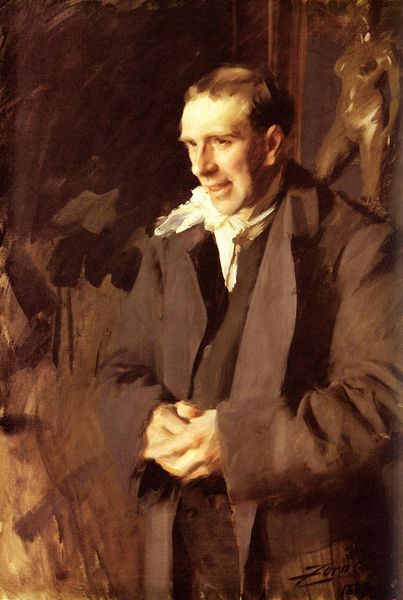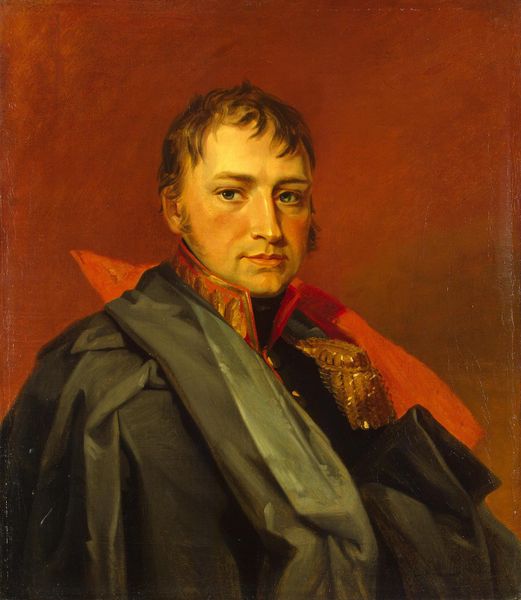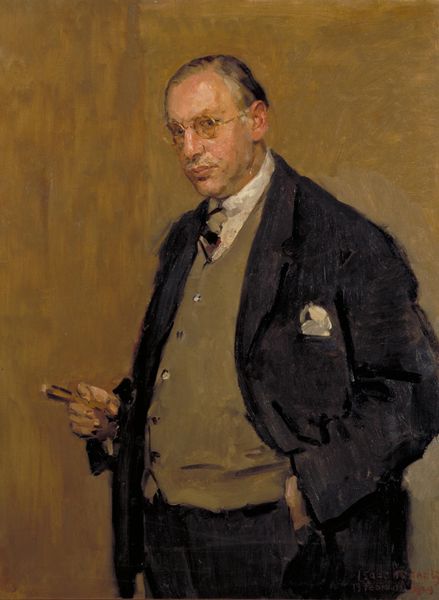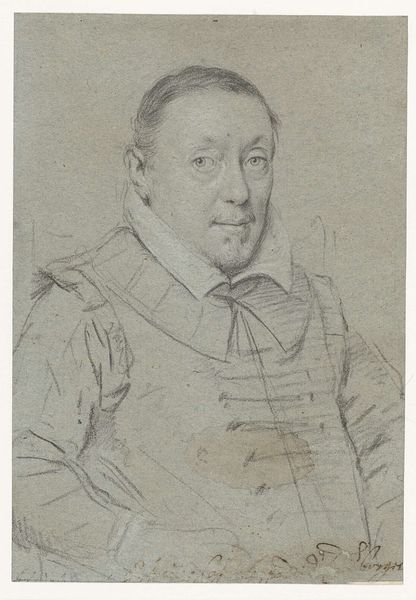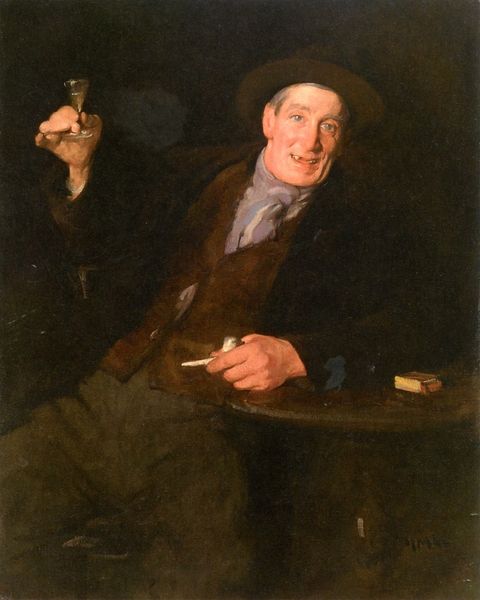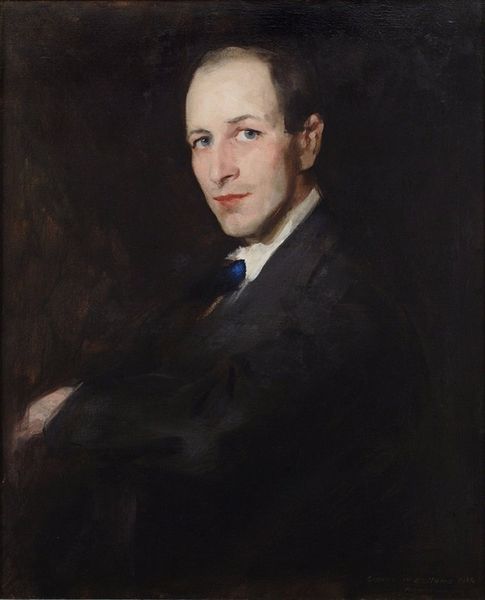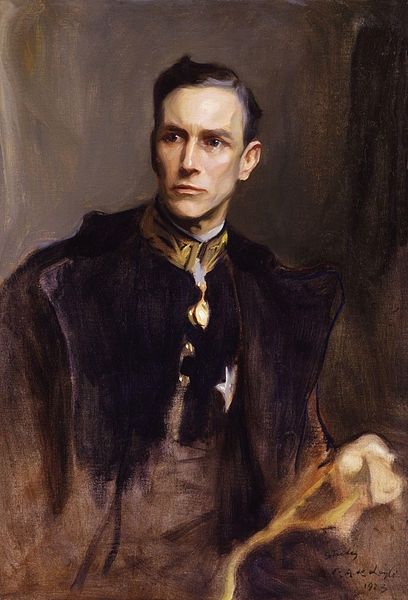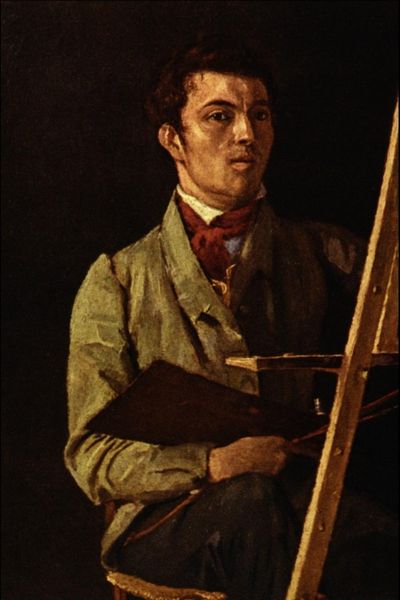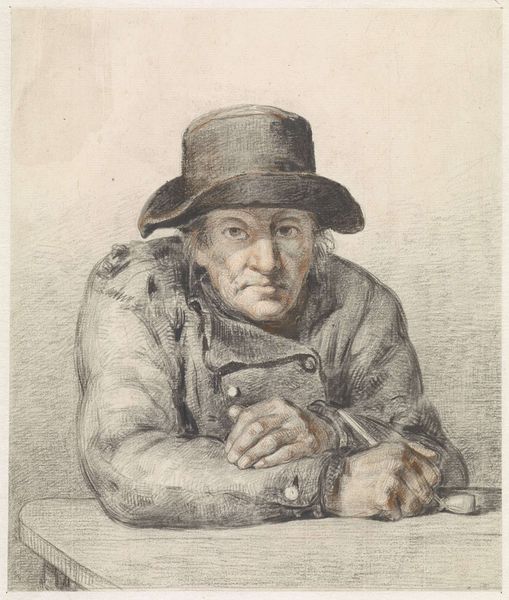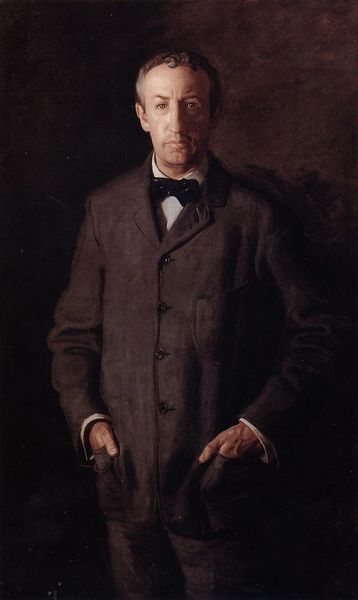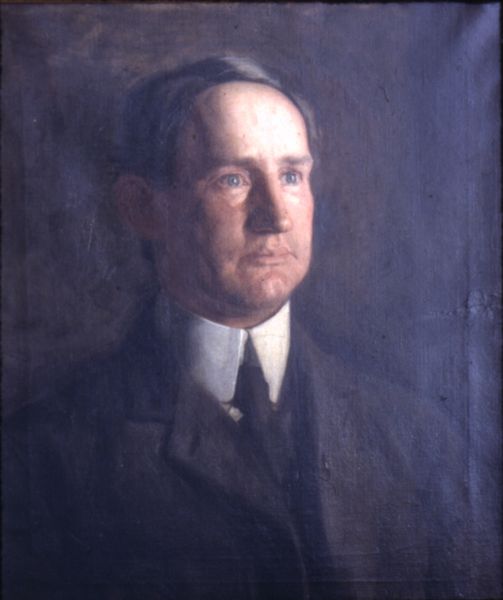
painting, oil-paint
#
portrait
#
portrait
#
painting
#
oil-paint
#
realism
Copyright: Public domain
Editor: Here we have George Washington Lambert’s 1924 oil painting, "Portrait of Charles E.W. Bean." The figure is bathed in light, poised with pen and paper; it feels incredibly intimate and studious, almost like catching someone in a moment of quiet contemplation. What strikes you most about this piece? Curator: Ah, yes, a moment caught. For me, it’s the knowing in Bean's eyes—that quiet intensity. Lambert’s brushstrokes almost hum with Bean’s inner life. There’s a stillness, isn’t there? As if we’re not just seeing him, but feeling the weight of his thoughts. Makes you wonder what’s swirling behind those spectacles. Do you find it affecting how Lambert, who painted a lot of war images, positioned Bean in semi-military garb? Editor: I do, actually! It gives the piece an interesting duality—the softness of the light against the almost uniform-like coat. Did Lambert intentionally soften what might be a portrait of a very rigid and structured man? Curator: Perhaps. Or perhaps, it is Lambert humanizing Bean. We can imagine Lambert saying, "Look closer, dear viewer, he is a soul beyond his stature." The subtle textures—the wrinkles in the coat, the way the light catches his hair – each one tells a small, human story. It invites you to pause and consider that even the most formidable figures are, at their core, beings of thought, memory, and emotion. Editor: That’s beautiful. I initially saw this as a simple portrait, but you’ve unveiled so much depth. It's now a conversation, a story quietly unfolding before our eyes. Curator: Exactly! And that, my dear friend, is the magic of art: the ability to transform a fleeting glimpse into an eternal dialogue. A good painting is like a song; after multiple listens, the world can change and so can you.
Comments
No comments
Be the first to comment and join the conversation on the ultimate creative platform.
